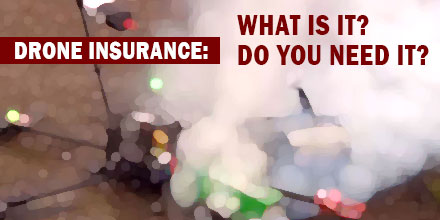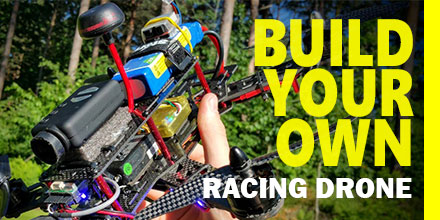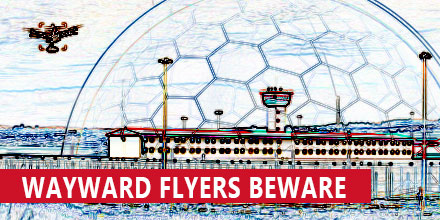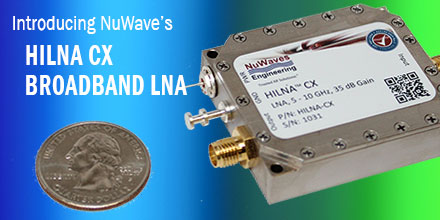
When it comes to insuring personal possessions, many are tempted to decide against getting coverage if the law does not specifically require it.
People are even more resistant if the cost to cover the item is higher than the cost to replace the item. That's just common sense, right?
Maybe.
Insurance can be an important part of planning for the unexpected, particularly if a business is involved.
If you use drones in your organization, or are looking to do so, it makes sense to get insurance coverage for your air vehicles...just as you would for your terrestrial kind.
There are several advantages to insuring your drone. For one, it enables you to recoup any losses due to mishap, crash or theft. And, even more importantly, drone insurance could potentially win you more clients. Many individuals simply won't work with a company that is not insured.
But what is drone insurance and do you need it? And, if you're operating a drone-based business, what kind of insurance coverage do you need? Is it different from drone insurance? Read on to find out if drone insurance is the right move for you.
Drone Insurance Coverage
Similar to other insurance policies, drone insurance provides coverage in the event of a mishap, accident or theft of the drone and any related equipment. This coverage can also include other ground-based and non-pilot crew in addition to drone operators. Drone insurance policies commonly comprise two parts; damage to the drone itself, and liability, which cover any damage and claims from third-parties.
For additional peace of mind, your chosen insurer should also offer coverage for third party liability, personal injury, and premises liability. This provides insurance for any damage to your company’s buildings or those of a customer or private owner.
Drone Insurance 101
The process of getting drone insurance is similar to securing coverage for a home or vehicle. Some companies may require additional information, such as: proof of training, maintenance logs, operating manuals, a record of parts or add-ons. Such documentation proves that you are operating your vehicle in a safe, conscientious manner. It also improves your chance of acquiring more favorable insurance rates.
In terms of selecting coverage, it depends on a few factors including the primary way you employ your drone and the environments in which you operate. A drone used to take real estate photography may need different coverage than a drone used to inspect bridges. Identifying these potential hazards is a key to choosing the right amount of coverage.
Drone Insurance Costs
When it comes to cost there are, of course, many variables. What type of drone a you're flying? How many drones do you need to cover? What are your potential operating liabilities? How much coverage do you need to protect yourself and your equipment?
For example, a commercial-use policy for top end drones, such as the Yuneec Typhoon H or the DJI Phantom 4, costs between $600-$800 per year with coverage up to $1 million in liability.
Another factor that influences cost is your flight experience. Of course, costs rise depending on the size of liability coverage you require.
Each insurance company structures their policies differently. Some only cover single units while others are willing to insure multiple drones. One option for fleet owners is a policy that offers coverage for both liability and physical damage using a pricing model for one UAV. As long as only one UAV is flown at a time, there is no additional cost to cover additional drones in the fleet.
How to Get Drone Insurance
To insure your drone, simply get in touch with any of the insurance companies listed below. In addition to proof of any ongoing or completed drone pilot training, here’s what you’ll need to ensure that you get the best possible insurance policy for your business:
- A minimum of 50 – 100 hours of piloting and flying UAVs
- An FAA Drone pilot licence
- Maintenance Logs
- Type of Coverage; liability/ Hull
- Details of Leases, or Proof of Ownership
- Information pertaining to how the drone is used and operational environments
To ensure you get the best coverage for your dollar, you will need to shop around. Get quotes from a number of companies, compare costs and coverage and decide which one is right for you.
A word of caution, it is possible to lose your coverage if any of the policy providers’ conditions are not met. These include but are not limited to: failure to log flight and maintenance data, operating a drone without proper identification details or serial numbers, and instances of unethical flying.
For commercial operations based in the United States the following companies offer drone, UAV, and UAS insurance policies. Providers include Allianz, Avalon Risk Management, Aviation Insurance, Berkley Aviation, Skyvuse, UAV Protect, Verifly, Starr Aviation, and many others. There are many drone-specific insurers but others offer a broader range of insurance products.
Filing Claims
Unfortunately, mishaps do occur and when that happens you'll need to file a claim. It's a good idea to review your policy and understand the claim process
before an incident occurs. That way there are no surprises.
Most often, the first step is to notify your insurance company as soon as possible. Depending on the incident, you may also need to notify local authorities. To expedite the entire process, cooperate with the insurance company. Provide any information needed quickly and efficiently.
Though there are many advantages to drone insurance, particularly for commercial drone operators, ultimately the decision is up to you, the operator.
 March 20, 2017 - SBG Systems will unveil the new Ekinox 2 Series this week during the U.S. Hydro Show, in Galveston, TX.
The Ekinox 2 Series is a new generation of SBG's advanced line of tactical grade MEMS-based inertial navigation systems. It features new accelerometers and gyroscopes, enhancing Ekinox 2 attitude accuracy by a factor of two.
In addition, Ekinox 2 is available as a drop-in replacement of the previous Ekinox, at the same price level. There is no need for any additional electrical or software integration. Find out more by reading the SBG product change notification.
March 20, 2017 - SBG Systems will unveil the new Ekinox 2 Series this week during the U.S. Hydro Show, in Galveston, TX.
The Ekinox 2 Series is a new generation of SBG's advanced line of tactical grade MEMS-based inertial navigation systems. It features new accelerometers and gyroscopes, enhancing Ekinox 2 attitude accuracy by a factor of two.
In addition, Ekinox 2 is available as a drop-in replacement of the previous Ekinox, at the same price level. There is no need for any additional electrical or software integration. Find out more by reading the SBG product change notification.

 After revolutionizing the photography and film-making industries, it was inevitable that the racing industry would also feel the impact of drones.
The most popular form of competitive drone racing is First Person View (FPV). Such events are quickly gaining traction among UAV enthusiasts and the mainstream media.
With the backing of some wealthy benefactors, drone racing’s popularity is only set to rise.
If you would like to head off to the races, read on to learn how to build a racing drone in a few easy steps.
After revolutionizing the photography and film-making industries, it was inevitable that the racing industry would also feel the impact of drones.
The most popular form of competitive drone racing is First Person View (FPV). Such events are quickly gaining traction among UAV enthusiasts and the mainstream media.
With the backing of some wealthy benefactors, drone racing’s popularity is only set to rise.
If you would like to head off to the races, read on to learn how to build a racing drone in a few easy steps.
 Drones are proving indispensable for a wide variety of applications. From aerial photography and film-making to agriculture and search and rescue operations, drones are now firmly part of the mainstream.
But there's another area where drones are starting to make a huge impact...the racing arena.
Once simply a pastime for RC enthusiasts, drone racing is quickly emerging as a sport widely regarded as the "next big thing".
And, why not? Drone racing features all the elements associated with big time racing: exotic locations, skilled pilots, high speeds, iconic courses, and, of course, wrecks. Plus, it now features all the other elements of organized leagues: television contracts, financial backers, big name sponsors, monetary prizes, and recognized racers.
Drone racing has arrived.
Drones are proving indispensable for a wide variety of applications. From aerial photography and film-making to agriculture and search and rescue operations, drones are now firmly part of the mainstream.
But there's another area where drones are starting to make a huge impact...the racing arena.
Once simply a pastime for RC enthusiasts, drone racing is quickly emerging as a sport widely regarded as the "next big thing".
And, why not? Drone racing features all the elements associated with big time racing: exotic locations, skilled pilots, high speeds, iconic courses, and, of course, wrecks. Plus, it now features all the other elements of organized leagues: television contracts, financial backers, big name sponsors, monetary prizes, and recognized racers.
Drone racing has arrived.
 It was inevitable. Given the vast proliferation of drones, counter-drone measures were simply a matter of time. After all, control of the airspace is a crucial aspect to security.
Drones continued popularity, coupled with decreasing prices and increasing capabilities, also means increased potential for misuse.
Though most drone operators are harmless, the threat still lingers from those who may harbor felonious or malicious intent.
It was inevitable. Given the vast proliferation of drones, counter-drone measures were simply a matter of time. After all, control of the airspace is a crucial aspect to security.
Drones continued popularity, coupled with decreasing prices and increasing capabilities, also means increased potential for misuse.
Though most drone operators are harmless, the threat still lingers from those who may harbor felonious or malicious intent.
 When it comes to insuring personal possessions, many are tempted to decide against getting coverage if the law does not specifically require it.
People are even more resistant if the cost to cover the item is higher than the cost to replace the item. That's just common sense, right?
Maybe.
Insurance can be an important part of planning for the unexpected, particularly if a business is involved.
If you use drones in your organization, or are looking to do so, it makes sense to get insurance coverage for your air vehicles...just as you would for your terrestrial kind.
There are several advantages to insuring your drone. For one, it enables you to recoup any losses due to mishap, crash or theft. And, even more importantly, drone insurance could potentially win you more clients. Many individuals simply won't work with a company that is not insured.
But what is drone insurance and do you need it? And, if you're operating a drone-based business, what kind of insurance coverage do you need? Is it different from drone insurance? Read on to find out if drone insurance is the right move for you.
When it comes to insuring personal possessions, many are tempted to decide against getting coverage if the law does not specifically require it.
People are even more resistant if the cost to cover the item is higher than the cost to replace the item. That's just common sense, right?
Maybe.
Insurance can be an important part of planning for the unexpected, particularly if a business is involved.
If you use drones in your organization, or are looking to do so, it makes sense to get insurance coverage for your air vehicles...just as you would for your terrestrial kind.
There are several advantages to insuring your drone. For one, it enables you to recoup any losses due to mishap, crash or theft. And, even more importantly, drone insurance could potentially win you more clients. Many individuals simply won't work with a company that is not insured.
But what is drone insurance and do you need it? And, if you're operating a drone-based business, what kind of insurance coverage do you need? Is it different from drone insurance? Read on to find out if drone insurance is the right move for you.
 February 28, 2017 – NuWaves Engineering, an international Radio Frequency (RF) and Microwave solutions provider, unveils HILNA CX broadband low noise amplifier covering C to X Band frequencies. Effectively extending the frequency range and potential applications over which the HILNA family of low noise amplifier (LNA) products can operate.
The HILNA CX is the latest addition to the NuWaves’ High Intercept Low Noise Amplifiers (HILNA) family of LNA’s, covering C- to X-Band frequencies.
February 28, 2017 – NuWaves Engineering, an international Radio Frequency (RF) and Microwave solutions provider, unveils HILNA CX broadband low noise amplifier covering C to X Band frequencies. Effectively extending the frequency range and potential applications over which the HILNA family of low noise amplifier (LNA) products can operate.
The HILNA CX is the latest addition to the NuWaves’ High Intercept Low Noise Amplifiers (HILNA) family of LNA’s, covering C- to X-Band frequencies.
